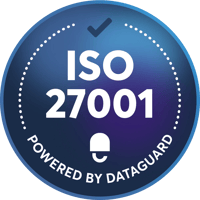FAQs about Information Security Management Systems (ISMS)
What is an ISMS, and why is it important?
An ISMS (Information Security Management System) is a set of policies, procedures, and controls that are designed to protect an organisation's information assets, such as financial data, customer data, and intellectual property. It is important because it helps organisations to:
- Protect their information assets from unauthorized access, use, disclosure, modification, or destruction.
- Comply with information security regulations and standards.
- Reduce the risk of data breaches and other security incidents.
- Improve their overall security posture.
Watch this video to find out more about why an ISMS is essential for your organisation.
What is ISO 27001, and how does it relate to ISMS?
ISO 27001 is an international standard that specifies the requirements for an ISMS. It is the most widely recognised standard for information security management, and it is used by organisations of all sizes in all industries.
An ISMS that is compliant with ISO 27001:2022 is considered to be a best practice, and it can help organisations demonstrate their commitment to information security.
How does an ISMS benefit my organisation?
An ISMS can benefit your organisation in a number of ways, including:
- Reduce the risk of data breaches and other security incidents.
- Improve compliance with information security regulations and standards.
- Protect the confidentiality, integrity, and availability of information assets.
- Reduce the cost of security measures.
- Improve the efficiency of security operations.
- Increase employee awareness of security risks.
- Enhance your organisation's reputation and brand value.
What are the challenges of implementing an ISMS?
The challenges of implementing an ISMS can vary depending on the size and complexity of your organisation. However, some common challenges include:
- Lack of management commitment.
- Lack of resources.
- Lack of expertise.
- Resistance to change.
- The cost of implementation.
How can I get started with an ISMS?
The first step in getting started with an ISMS is to assess your organisation's current security posture. This will help you to identify the gaps that need to be addressed. Once you have identified the gaps, you can develop a plan to implement the ISMS.
What are the requirements of ISO 27001:2022 Clause 4.4?
Clause 4.4 of ISO 27001:2022 is the requirement for organisations to establish, implement, maintain, and continually improve an ISMS. This clause emphasises the importance of management commitment to information security and the need to involve all relevant stakeholders in the development and implementation of the ISMS.
To get started on the right foot with creating your ISMS, it can be helpful to create a document that runs through how to do each key process for the ISMS step-by-step. This includes some examples such as:
- Security policy management process
- Risk assessment process and a process for handling such risks
- Process to ensure the necessary awareness and competence
How do I conduct a risk assessment?
A risk assessment is a process of identifying, assessing, and mitigating the risks to your organisation's information assets. It is an essential part of any ISMS.
- The risk assessment process typically includes the following steps:
- Identify the assets that need to be protected.
- Identify the threats and vulnerabilities to those assets.
- Assess the likelihood and impact of each threat.
- Develop and implement controls to mitigate the risks.
Watch the on-demand webinar: How to conduct effective risk management for ISO 27001 compliance.
How do I monitor and review my ISMS?
The ISMS should be monitored and reviewed on a regular basis to ensure that it is effective. This includes:
- Monitoring the effectiveness of the security controls.
- Reviewing the risk assessment.
- Conducting internal audits.
- Seeking feedback from stakeholders.
How do I improve my ISMS?
The ISMS should be continually improved to ensure that it remains effective.









